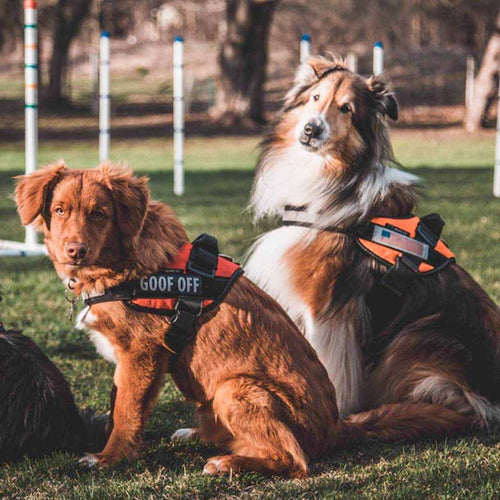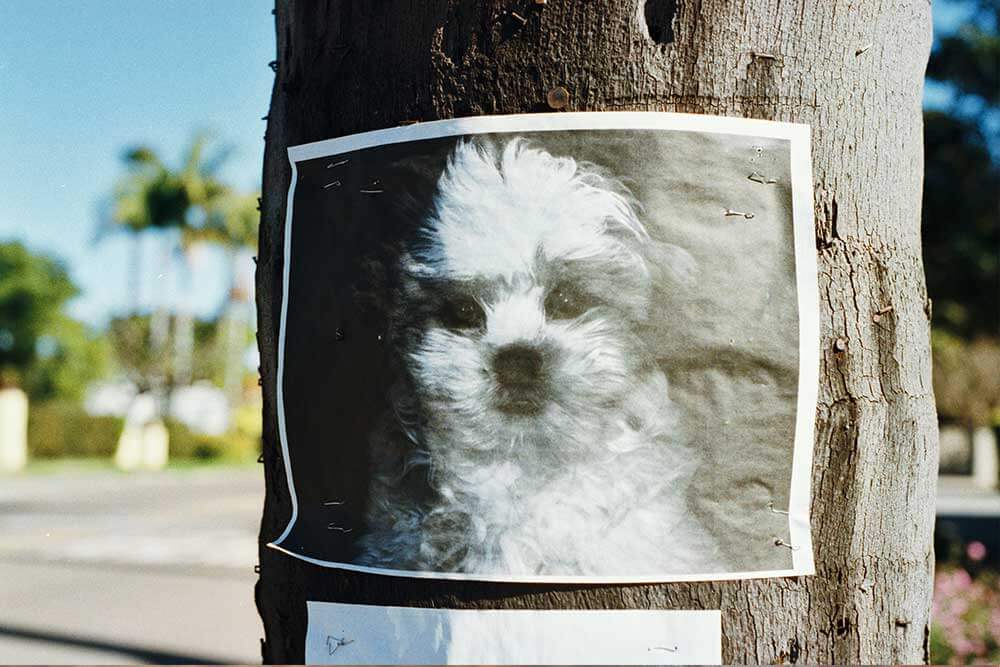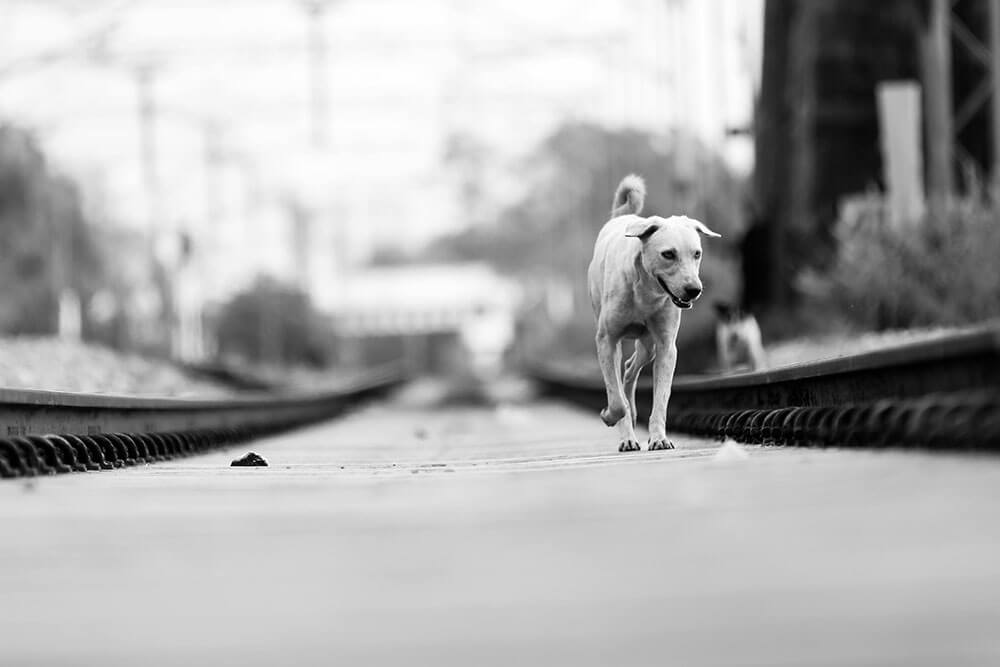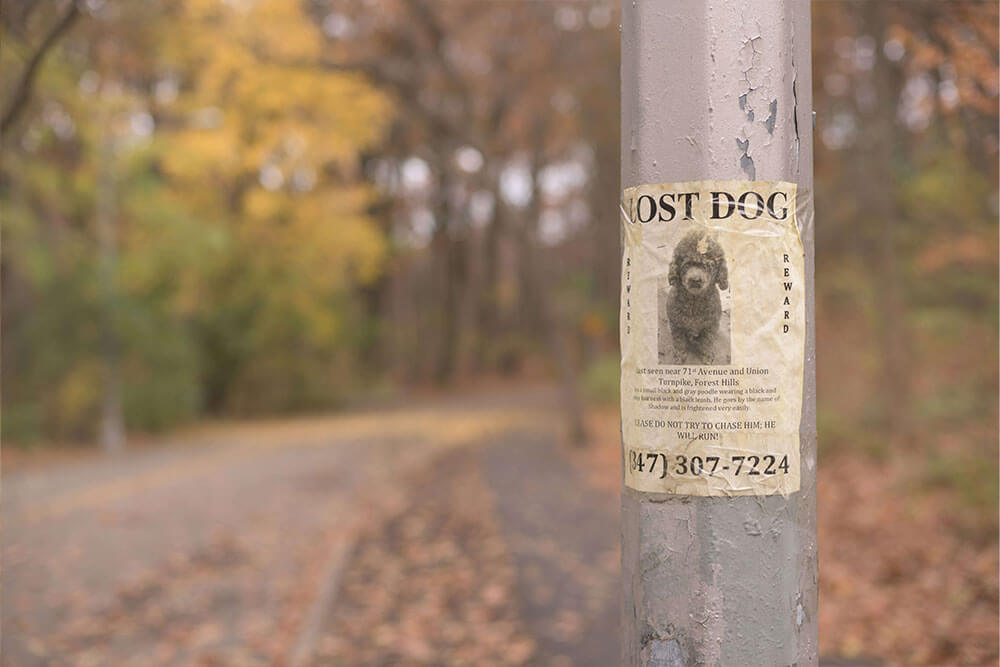If your dog goes missing, act quickly. To inform people and get help from your neighbors and community, make a lost dog flyer. A good flyer includes specific details about you and your dog in a clear, straightforward format. Here are some basic design tips:
Color Pallet
Limit your flyer to two or three colors for clarity and impact. Opt for primary colors and hues that convey urgency or emergency, such as reds and yellows, while avoiding pastels or overly dark shades.
Title
Make sure your title is short, bold, and written in all caps using a sans-serif font. It should take up a prominent quarter of the poster and clearly say 'LOST DOG.'
Photo
The photo is key on a lost dog flyer. Follow these tips to make your flyer more effective:
-
Use a high-quality, recent color photo of your dog.
-
Choose a clear picture that shows your dog accurately, avoiding holiday or overly cute images to ensure easy recognition.
-
Select a light background for clarity, especially for black-and-white printing.
-
Include a reference point, like a person or a car, to indicate your dog's size.

A No-nonsense Description
Keep descriptions short and clear because most people will only glance at your flyer for 5 seconds. Use minimal text in a large, clear font, and consider using bullet points instead of paragraphs:
-
Dog’s name
-
Breed
-
Gender
-
Age, but only if your dog is a puppy or visibly elderly
-
Size
-
Primary color and other physical characteristics
-
Temperament around strangers and other dogs. If your dog is easily scared or timid, prevent people from approaching them. If your dog might be aggressive, let others know to avoid any problems.
-
Medical conditions
-
Whether the dog is neutered/spayed
-
Whether the dog is microchipped
-
Color of collar, if applicable.
-
Last-seen area and date. Adding a date can show how urgent it is and prevent unnecessary calls from those who've seen similar dogs before yours disappeared. However, if your dog's been gone a while and you put the date, some might think it's less urgent. To balance this, add "Still looking!" to show your ongoing search efforts. Also, if your dog's been missing for a while, he might be out of town, so add "but could be anywhere now" to keep important information updated. In summary, when your dog's been lost for a while, write something like: 'Lost in Mission, Texas, May 2, 2024 (but could be anywhere now), still looking!'
-
Add "DO NOT CHASE" in large font, and ask people to call you immediately while keeping an eye on your dog.

Phone Numbers
Include at least 3, preferably more cellphone numbers from friends and family. This increases the chance of someone being reached if one number is busy.
Reward
If offering a reward, consider using "REWARD" without specifying the amount. Large rewards, such as $500 or $1,000, don't always improve the chances of finding your dog and may attract people taking advantage of the situation. There's evidence suggesting large rewards could even encourage dog theft to claim the reward.
Languages
In bilingual communities, make your sign in both languages.
Printing
Print your flyer in color on waterproof paper if possible. If not, laminate it or place it in a clear plastic sleeve to prevent the ink from running in the rain.
FAQs
-
How effective are lost dog posters?
They work best when they include a clear photo of the dog, a no-nonsense description, contact information, and the location where the dog was last seen. Posting them in high-traffic areas, such as grocery stores, community centers, and parks, increases the chances that someone will recognize your dog and contact you.
-
Should I offer a reward?
Yes, offering a reward can help. Use "REWARD" without saying how much. Large rewards don't always help and might attract people trying to take advantage. They could even encourage dog theft.
Further Reading:
























